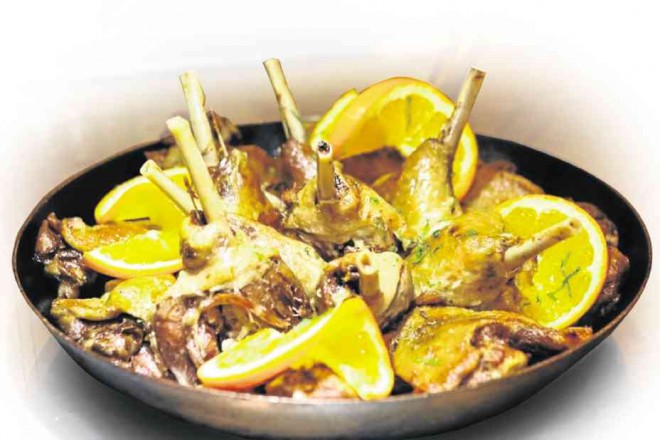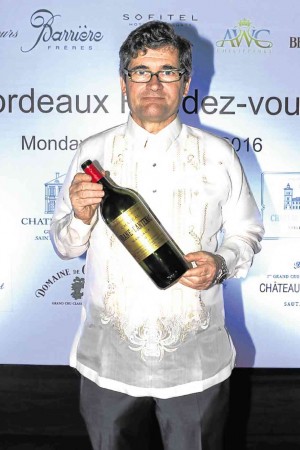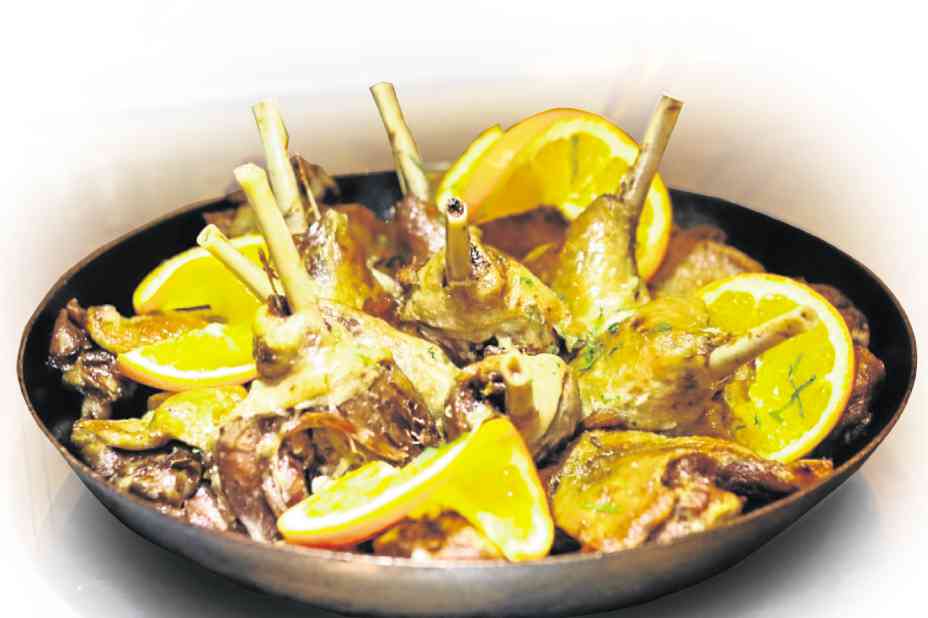
At one end of the tasting room, Henri Lurton offered a glass of his Bordeaux estate’s Château Brane-Cantenac. It was velvety smooth, setting it apart from what we had tasted so far.
But Lurton’s was only one of 18 Bordeaux estates participating in the Bordeaux Rende-Vous 2016 that had been touring five Southeast Asian countries. The Philippines was the last leg.
In front of him was the more flamboyant Jean Paul Bignon, white-haired and smiling, offering his Chateau Talbot 2001, and saying yes to our question if the name was English. Talbot was an English warrior.
Then he offered a 1996 vintage which affirmed how Bordeaux wines waited long to achieve excellence. Through the tasting, we heard the same refrain: “This wine can be drunk many years from now.”
Bordeaux is an important wine region of France which, according to the Oxford Companion to Wine (edited by Jancis Robinson), “produces more top quality wine than any other.”
Bordeaux’s classified first-growth grapes such as Margaux, Lafite and Latour are among the most sought-after wines by connoisseurs and collectors.
But with the proliferation of “New World” wines, such as those from Australia, the United States, and South America, French wine producers have had to realign their sales strategy, like applying the promotional technique of the New World, though not through wine producers associations, but via established negociantes or traditional wine merchants.
The tasting was done at Txanton in Makati that promotes itself as the first jamoneria in the country.
Because it was near noon, the offerings of jamon, tortilla and manchego were welcome.
Several tables held a few of the wines of each of the 18 producers.
And everywhere, talk was about vintage, taste and aroma—winespeak quotables such as “toasty notes,” “refined nose” and “tannic structure.”
A swirl, a sniff, a taste and, if you wanted to sample the lot, you’d have to spit.
To spit would take practice because, with your head near the mouth of the container, the wrong technique might have the discarded wines to spit back.
In the evening, wine pairing was scheduled at Sofitel Philippine Plaza. The Bordeaux male guests changed into Filipino barong, especially made for them with their chateau names embroidered on one side.
The hotel officials and many of the guests followed suit in their Filipiniana wear that gave the visitors an idea of how native clothes could give a formal, elegant atmosphere to the occasion.
Lurton sat at our table to tell us more about himself, how he wanted to experience the world outside of the borders of Bordeaux and so he went to Australia, Chile and South Africa.

Funny how he chose wine-producing regions for his “other” experience adventures. But that gave him a view of how New World wines were produced, a fresh outlook beyond the confined Bordeaux world he is from.
But when his father told him he had to return because there was Château Brane-Cantenac waiting for him to take on, he knew he had no choice. All his siblings had to do the same, he said.
It was only much later that we found out that this low-key Lurton belongs to one of the old prestigious families of Bordeaux, and that his great-grandfather was Chateau Margaux owner Léonce Récapet.
Mialhe
Lurton added he is a neighbor and friend of Edouard Mialhe, who relocated with his family to Bordeaux from Manila to run the family’s Chateau Siran.
Bignon of Chateau Talbot greeted us like an old friend. At the tasting, he said his daughter’s name is Philippine, just like the daughter of Baron Philippe Rothschild whose wines from his two other estates, Château D’Armailhac and Château Clerc Milon, were there.
Dinner was like a treasure hunt. Guests swarmed around Sofitel’s Spiral restaurant to look for the dishes listed on the menu. Then they went back to Veranda to look for the wines paired with each, then sat down to give their assessments.
It was a pleasure to have such great aged wines that more than complemented the dishes. What was curious was having those Bordeaux reds paired with Korean bulgogi, Indian lamb stew and Japanese teppanyaki. And two Filipino dishes—sisig and adobo.
Before we could get our sisig, Agustine Lecalle came forward, spoke in Filipino and said he worked in the country some time back.
He reassured us that the paired wine, a Château Pedesclaux 2013, the estate where he is sales and communications director, is a good pairing.
We assumed that Bordeaux Rende-Vous 2016 had to make its wines relevant to the countries they visited by making sure their Western wines could enhance or be enhanced by Eastern dishes.
E-mail the columnist at [email protected]









































